The Essential Guide to Long-Term Mobility and Wellness
Maintaining mobility is key to staying active, independent, and feeling your best as time goes on. This guide covers practical, effective movements and habits designed to keep your joints healthy, muscles flexible, and overall wellness in check—helping you move with ease and confidence for years to come.
BLOG.
8/3/20253 min read


The Importance of Mobility and Key Areas to Focus On
Maintaining good mobility is essential for keeping your body functioning well and feeling comfortable as you age. Mobility goes beyond simple flexibility—it involves the ability of your joints and muscles to move through their full range of motion without pain or restriction. Improving mobility supports better posture, reduces the risk of injury, and makes everyday activities easier and more enjoyable.
This guide covers six foundational mobility exercises that target key areas of the body: hips, spine, shoulders, and ankles. These movements require no equipment and just a few minutes of your day.
Hip Circles
Target Area: Hip joint and surrounding muscles
Why It Matters: Loosens up tight hips and improves hip mobility for daily movement
How To:
Stand tall, lift one knee to 90°
Slowly rotate it outward in a controlled circular motion
Repeat both directions on each leg (10 reps each)
Pro Tip: Keep your core tight and don’t let your upper body sway
World’s Greatest Stretch
Target Area: Hips, hamstrings, spine, thoracic rotation
Why It Matters: Improves full-body flexibility and posture, especially after sitting or training
How To:
Step into a deep lunge
Place opposite elbow inside the front foot
Rotate your chest upward, reaching your arm to the ceiling
Hold for 3–5 seconds, then switch sides
Pro Tip: Keep your back leg long and core engaged
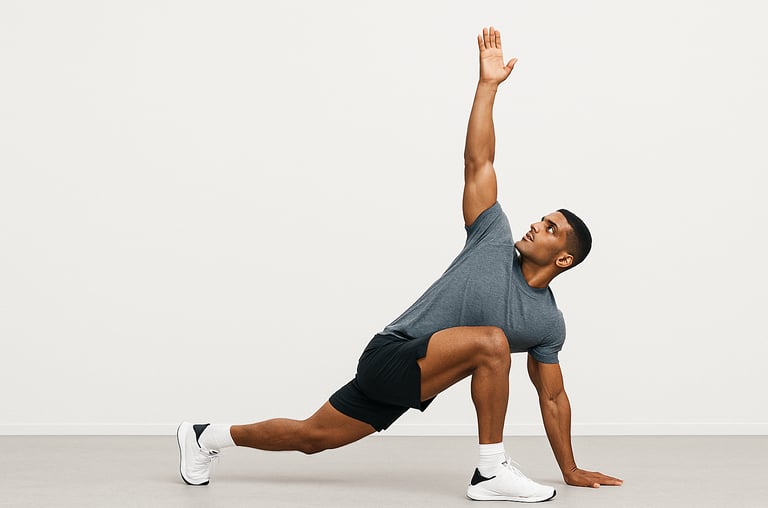

Ankle Leans
Target Area: Ankles, lower legs
Why It Matters: Improves ankle dorsiflexion, which helps with squatting, walking, and balance
How To:
Stand in a staggered stance
Slowly drive your front knee forward over the toes
Keep your heel flat on the floor
Lean in and out for 10 controlled reps
Pro Tip: Use a wall for support if needed
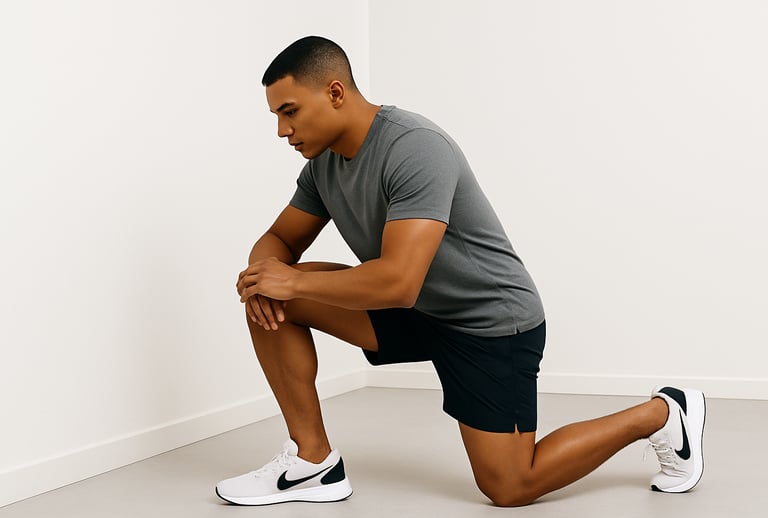

Thread the Needle
Target Area: Shoulders, upper back, thoracic spine
Why It Matters: Opens up the upper back and reduces tension from hunching or desk work
How To:
Start on all fours
Slide one arm under the other, reaching across the floor
Lower your shoulder and head gently to the ground
Hold for 5–10 seconds, then switch sides
Pro Tip: Keep hips stacked and avoid twisting through your lower back
Cat-Cow Spinal Flow
Target Area: Spine, especially thoracic and lumbar regions
Why It Matters: Promotes spinal flexibility and relieves tension from poor posture
How To:
Get on all fours
Exhale and round your spine upward (cat)
Inhale as you drop your belly and lift your chest (cow)
Flow slowly for 8–10 reps
Pro Tip: Move with your breath for better relaxation
90/90 Hip Switches
Target Area: Hip internal and external rotation
Why It Matters: Supports joint health and fluid lower body movement
How To:
Sit on the floor with knees bent at 90°
Drop both knees to one side, keeping your chest upright
Switch sides in a controlled motion
Repeat 8–10 times
Pro Tip: Add a slight forward lean over the front leg for a deeper stretch
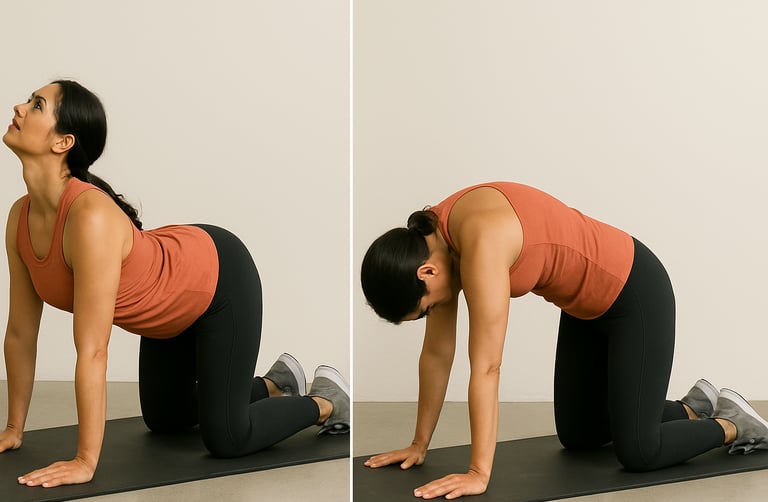

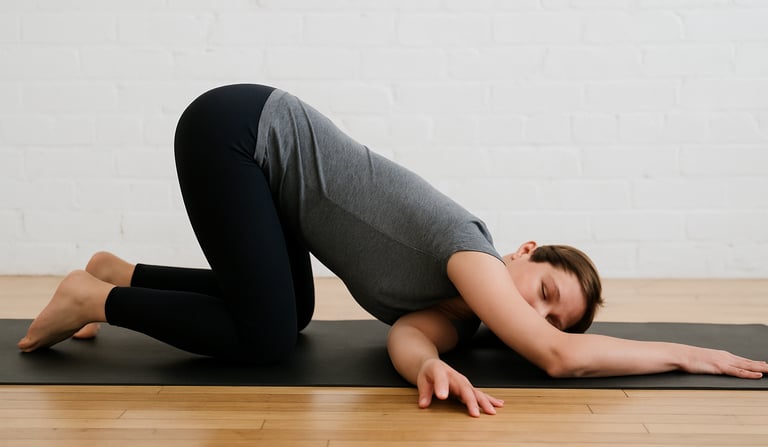

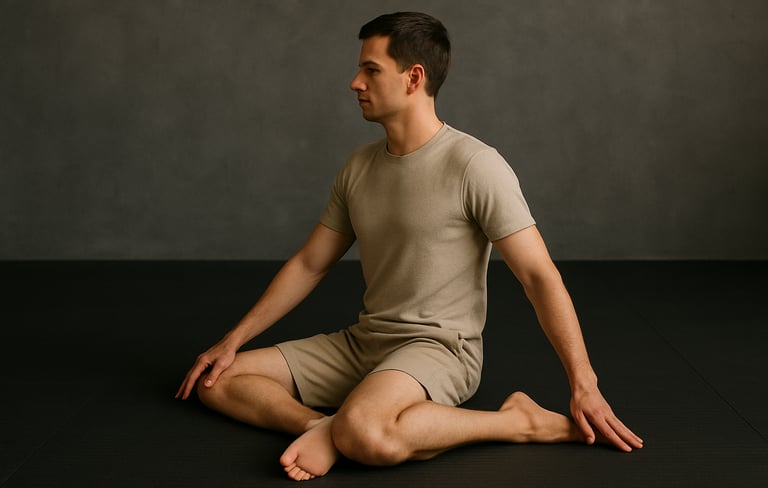

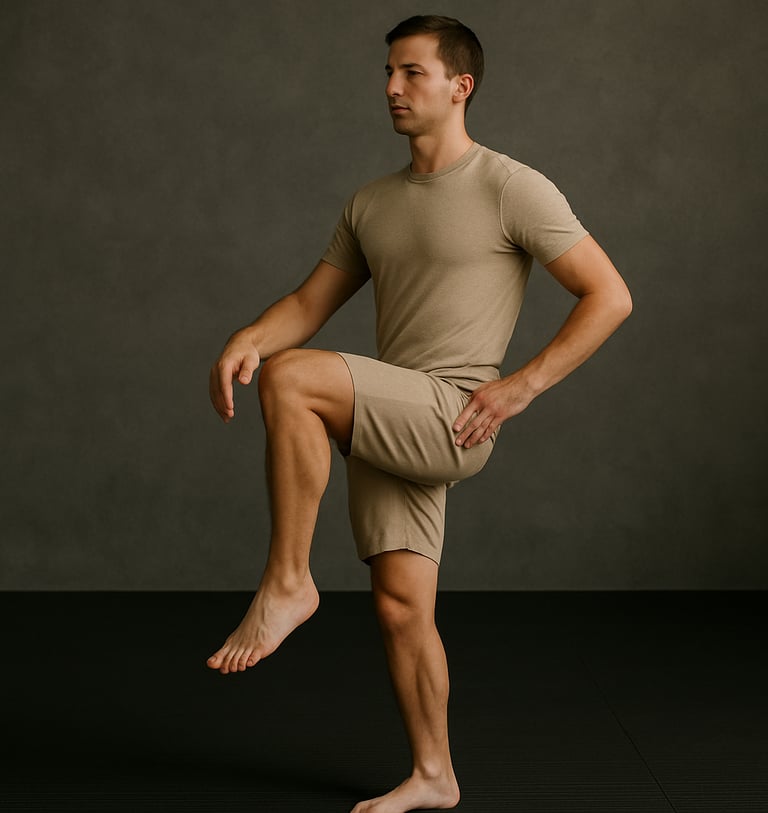

Keep It Moving
Consistency is the key to lasting results. These simple movements might not look flashy, but they can make a major difference in how your body feels and functions over time. Start small, stay consistent, and your future self will thank you.